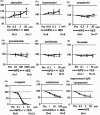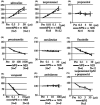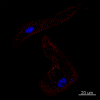The case for induced pluripotent stem cell-derived cardiomyocytes in pharmacological screening
- PMID: 22845396
- PMCID: PMC3651657
- DOI: 10.1111/j.1476-5381.2012.02118.x
The case for induced pluripotent stem cell-derived cardiomyocytes in pharmacological screening
Abstract
The current drug screening models are deficient, particularly in detecting cardiac side effects. Human stem cell-derived cardiomyocytes could aid both early cardiotoxicity detection and novel drug discovery. Work over the last decade has generated human embryonic stem cells as potentially accurate sources of human cardiomyocytes, but ethical constraints and poor efficacy in establishing cell lines limit their use. Induced pluripotent stem cells do not require the use of human embryos and have the added advantage of producing patient-specific cardiomyocytes, allowing both generic and disease- and patient-specific pharmacological screening, as well as drug development through disease modelling. A critical question is whether sufficient standards have been achieved in the reliable and reproducible generation of 'adult-like' cardiomyocytes from human fibroblast tissue to progress from validation to safe use in practice and drug discovery. This review will highlight the need for a new experimental system, assess the validity of human induced pluripotent stem cell-derived cardiomyocytes and explore what the future may hold for their use in pharmacology.
© 2012 The Authors. British Journal of Pharmacology © 2012 The British Pharmacological Society.
Figures





References
-
- Behringer RR. Human-animal chimeras in biomedical research. Cell Stem Cell. 2007;1:259–262. - PubMed
-
- Bers DM. Cardiac excitation-contraction coupling. Nature. 2002;415:198–205. - PubMed
-
- Binah O, Dolnikov K, Sadan O, Shilkrut M, Zeevi-Levin N, Amit M, et al. Functional and developmental properties of human embryonic stem cells-derived cardiomyocytes. J Electrocardiol. 2007;40(Suppl.):S192–S196. - PubMed
Publication types
MeSH terms
Grants and funding
LinkOut - more resources
Full Text Sources
Other Literature Sources

